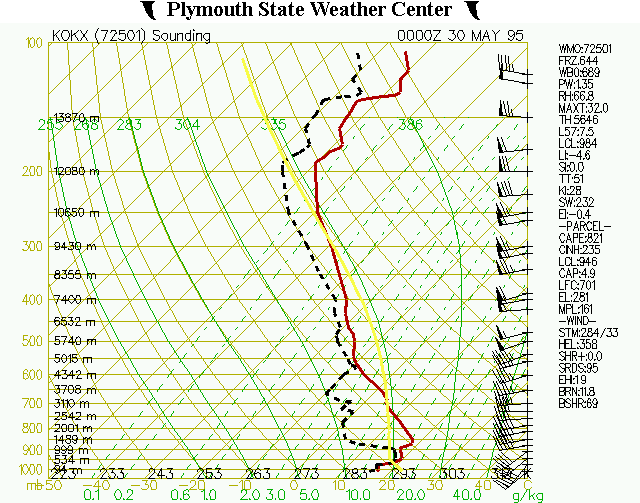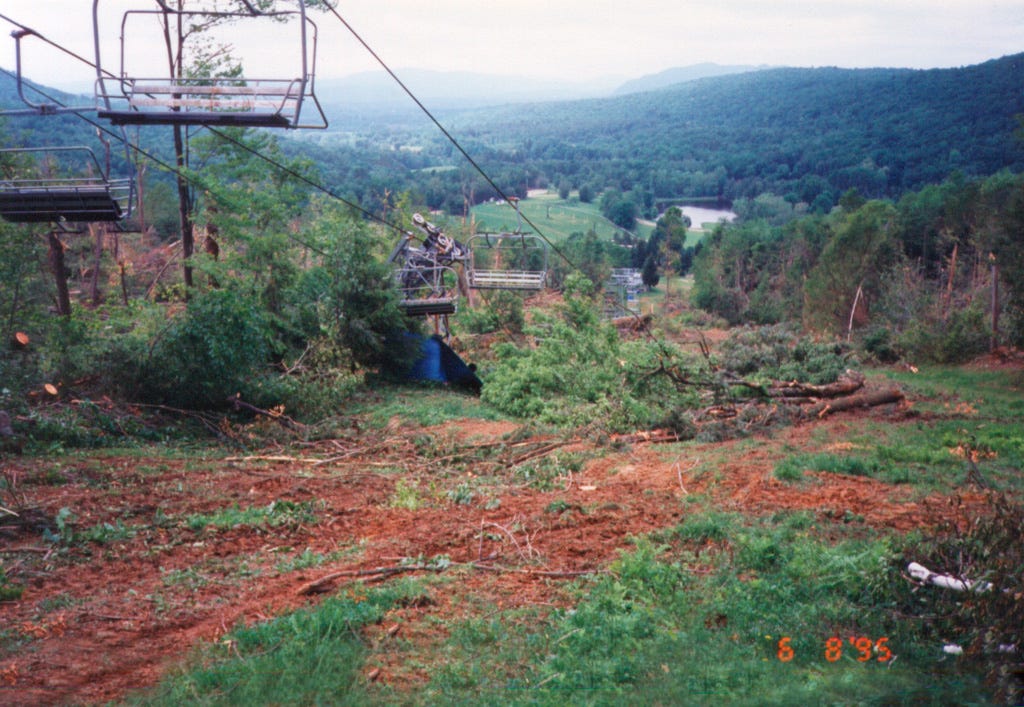On Memorial Day, 1995 a tornado touched down in Columbia County, NY and lifted a short time later. Over the Berkshires the supercell produced another tornado that was rated an F4 while on the ground for 11.5 miles from Egremont, MA to Otis, MA.
Radar imagery above from National Weather Service Albany, NY
This is how the storm looked on the Taunton, MA radar as it crossed the Berkshires. You can see well defined rotation (being sampled quite high above the ground) and at least initially a somewhat discrete supercell.
While the tornado was on the ground in Massachusetts there was another tornado in Southbury, CT. It was a weaker tornado rated an F1 by the National Weather Service.
You can see the classic hook echo and low level rotation from the OKX radar as the storm moves out of Bridgewater into Southbury. Rotational velocity reached about 35 knots with this storm at 3300ft ARL. Farther up in the storm there was a strong mid-level mesocyclone.
The environment that day was very supportive of supercells. An Elevated Mixed Layer (EML), which is a hallmark of most of New England’s high end severe weather days, was present. EML’s contain steep mid-level lapse rates which mean a sharp drop in temperature with height which increases the magnitude of instability.
The 600mb-850mb lapse rate was >8C/km which is very impressive. Strong deep layer shear on the order of 40 knots combined with strong instability was supportive of supercell thunderstorms.
In low levels this modified hodograph for observed conditions shows quite a bit of low level helicity/streamwise vorticity. Bosart et al. 2006 is a great paper examining the role of the complex terrain around the Taconics and Berkshires in tornadogenesis.
The Great Barrington tornado developed in an environment ripe for supercells. This was a classic Banacos-Ekster event with steep mid level lapse rates and strong deep layer shear which was supportive of tornadic supercells.
One of the more remarkable parts of this tornado is it occurred just about 20 miles north of the Cornwall-Bantam tornado in 1989. The Cornwall-Bantam tornado did severe damage to the Mohawk Mountain Ski Area ripping chair lifts off their cables and causing structural damage to several buildings. The 1995 tornado produced significant damage to the Butternut Basin Ski Area.
What an incredible stroke of bad luck for two local ski areas to be hit by tornadoes less than a decade apart. The odds of such an event seem exceptionally low.








